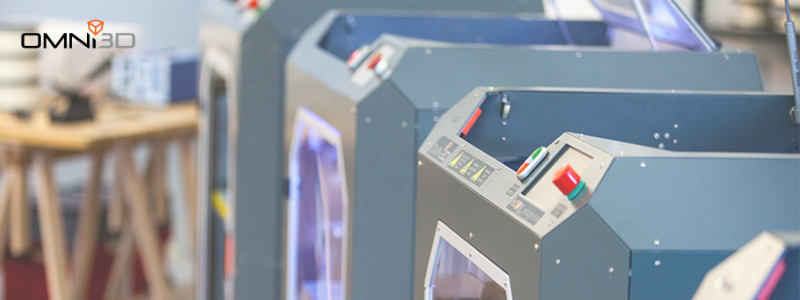3D printing of spare parts
Additive manufacturing methods are very widely used for example for the production of prototypes ('Rapid Prototyping') and (small) series production ('Rapid Manufacturing') as well as for the creation of spare parts.
Author: Jacek Krzyżanowski Key account manager Omni3D
One area of application in 3D printing that is becoming increasingly important is the printing of spare parts. Especially in the case of older machines, devices or cars (oldtimers and youngtimers), with very complex components or when there are no more „original spare parts” and with a very small number of copies of a given machine, where spare parts are often rare, very difficult or impossible to get. Industrial 3D printing allows you to meet these needs.
To make a 3D printed copy of a damaged or worn original part, the following two steps are necessary:
- Digitization of the element: In the case of 3D printing, it is necessary to provide a digital 3D model of the object. There are two ways to obtain a 3D model – designing a given spare part or a 3D scan. In particular, digitization is often underestimated as a cost factor. Scanning an object or creating a 3D model can result in costs ranging from three to four digits, depending on complexity. For small and medium-sized components, the cost of digitization often exceeds the cost of 3D printing. Especially in the case of objects with complex geometry, e.g. with numerous open spaces, it is advisable to use 3D scanning technology. However, this technology is reaching its limits when it comes to precise undercut scanning. This is usually only possible with computed tomography
- 3D printing: Filaments and metals are most commonly used for the production of spare parts. If the spare part is a functional element, thermoplastics (mainly nylon with carbon fiber) are particularly suitable. Technological development and low cost of printing put printing in FDM technology in a privileged position. A year ago, the durability and availability of filaments for printing left a lot to be desired. Currently, technological progress is so great that this technology allows us to meet the most sophisticated expectations. Metal 3D printing is not comparable to plastic printing, despite some technical similarities. Due to manufacturing and material requirements, trade-offs in surface quality and object dimensional tolerance must be made when 3D printing from metal. Moreover, the costs are much higher.
When is it worth 3D printing spare parts?
The answer is simple: when the value of the component is higher than the cost of digitization and subsequent 3D printing. What other advantages does spare parts printing offer you? The first is saving time. It is up to 80% compared to traditional solutions. The machine downtime is certainly less than when the part is printed than when we wait for the delivery of the part manufactured using the traditional method. The second is saving money. In the case of the turbine of the vacuum pump printed by Omni for Luk Plast, it was 90%. The third advantage is independence from an external supplier, which is a very important element these days. The fourth advantage is the ability to modify a given machine element in any way and the ability to adapt it to your own needs.

Contact:
LinkedIn: Jacek Krzyżanowski
m. +48 886 618 690
e-mail: jk@omni3d.com

